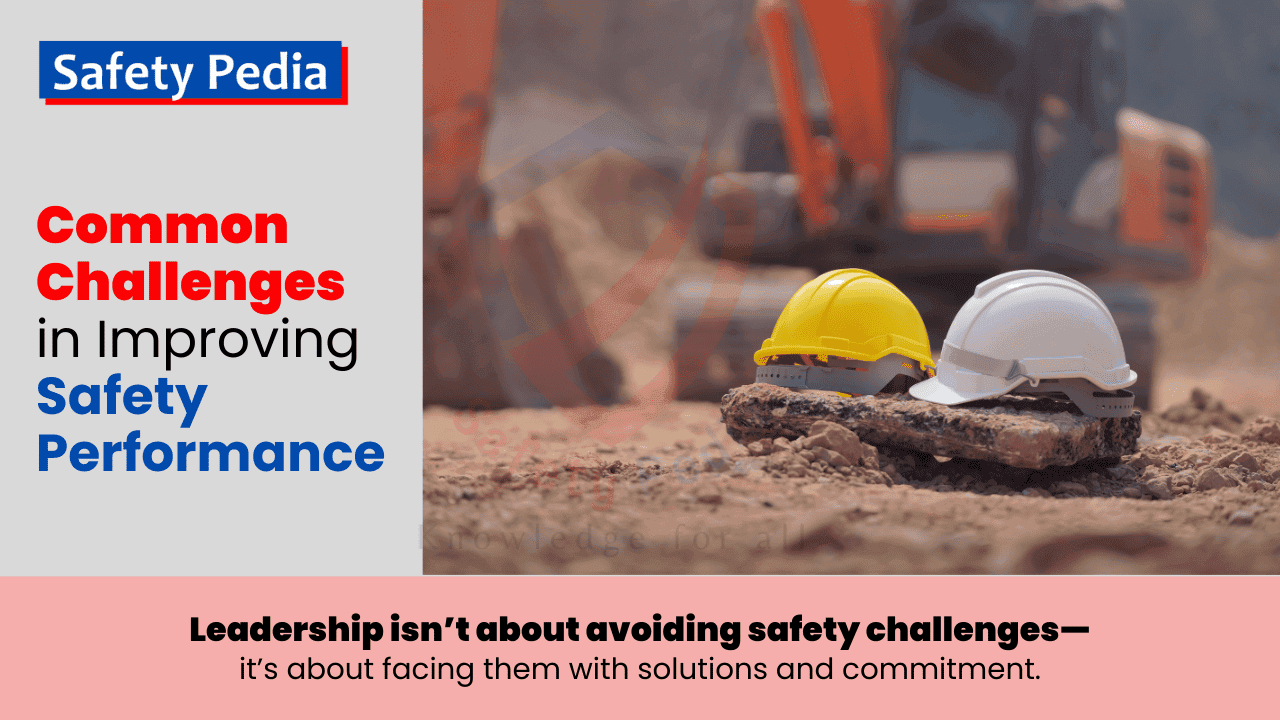
Why Is It Hard to Improve Workplace Safety? Common Challenges Explained
In today’s fast-paced work environment, ensuring safety performance must be a top priority for organizations across industries. However, improving safety performance can be challenging, with several common challenges often standing in the way.
Improving workplace safety faces persistent challenges due to a fundamental disconnect between stated intentions and actual practice. Too often, safety is treated as a secondary concern, easily sacrificed at the altar of production or cost-cutting. Management frequently pays lip service to safety, offering symbolic gestures while failing to invest the necessary resources, enforce crucial protocols, or encourage a genuine safety culture. This lack of genuine commitment permeates the entire organization, breeding complacency among workers who perceive safety initiatives as mere formalities.
Cultural resistance and reluctance to change further compound the problem, as employees and management may view safety improvements as disruptive or unnecessary.
Furthermore, ingrained habits, resistance to change, and a “that’s how we’ve always done it” mentality create significant barriers to implementing new, safer practices. Safety improvements will remain elusive without consistent and unwavering leadership that prioritizes worker well-being above all else.
Beyond management shortcomings, several other factors impede progress. Inadequate training programs that fail to address specific job hazards or engage workers effectively contribute to a lack of safety awareness. Poor communication channels prevent workers from reporting hazards or raising concerns without fear of reprisal. The pressure to meet deadlines and production targets often forces workers to take shortcuts, compromising safety.
Improving workplace safety is challenging because many organizations fail to learn from past incidents and often take a reactive approach rather than being proactive. Instead of identifying and addressing hazards before accidents occur, efforts are made only after an incident, leaving vulnerabilities unaddressed.
Moreover, a lack of employee engagement leaves workers disconnected from safety goals, reducing accountability and commitment. Overcoming these challenges requires a cultural shift, proactive strategies, and continuous improvement efforts to enable a safer and more resilient workplace.
Finally, a failure to thoroughly investigate incidents and implement corrective actions ensures that the same mistakes are repeated. True safety improvement requires a holistic approach that tackles these systemic issues head-on, demanding a shift in mindset from reactive compliance to proactive prevention. Anything less is a failure to protect the workforce.
In this article, we will explore the key challenges in improving safety performance in organizations and provide practical solutions to break down those barriers. We explore the importance of creating a safety culture beyond compliance and empower employees to participate actively in their safety. We also examine the role of effective leadership in driving safety initiatives and overcoming resistance to change.
So, if you’re ready to break down the challenges and take your safety performance to the next level, read on!
What Are Some Common Challenges in Improving Safety Performance?
Here are some of the 18 most common challenges faced when striving to enhance safety performance:
1. Failure to Learn from Incidents:
Regarding workplace safety, the failure to learn from incidents is one of the most significant barriers to improving safety performance. When safety incidents occur—regardless of their perceived severity—the knowledge gained from these events can be invaluable in preventing future occurrences. Unfortunately, many organizations still treat incidents as isolated events rather than opportunities for growth and improvement.
This mindset undermines the potential for enhanced safety measures and perpetuates a culture of complacency. By neglecting to analyze and learn from past incidents, companies risk repeating the same mistakes, putting their workforce at unnecessary risk and compromising overall safety standards.
Moreover, a lack of robust incident reporting and feedback mechanisms exacerbates this challenge. Employees may hesitate to report incidents due to fear of retribution or believing their concerns will fall on deaf ears. This resistance leads to a critical loss of information that could otherwise inform safety practices and training programs.
When organizations fail to cultivate an environment where reporting is encouraged and valued, they miss the opportunity to gather essential data that could lead to significant improvements in safety protocols. Regular training sessions that emphasize the importance of reporting incidents, combined with effective feedback systems, can encourage a proactive safety culture. This, in turn, empowers employees to engage actively in safety initiatives, driving a continuous cycle of learning and improvement.
Finally, the failure to learn from incidents can result in detrimental financial consequences for organizations. Serious injuries and accidents often lead to increased costs from medical claims, legal liabilities, and lost productivity. A poor safety record can damage a company’s reputation, impacting customer trust and market competitiveness.
Conversely, organizations prioritizing learning from incidents can enhance their safety performance, lowering accident rates and associated costs. Implementing a systematic approach to incident analysis, including the collection of data and the translation of findings into actionable strategies, is imperative. By embracing a culture of learning and accountability, companies can significantly improve their safety outcomes, safeguard their workforce, and ultimately achieve tremendous operational success.
Every incident should be investigated to determine the root cause. This will help to prevent similar incidents from happening in the future.
2. Reactive Rather Than Proactive Approach
A reactive rather than proactive approach to safety management poses significant challenges for organizations striving to enhance their safety performance. When businesses operate under the assumption that accidents are inevitable, they fail to cultivate a safety culture that prioritizes their employees’ well-being. Instead of anticipating risks and implementing preventive measures, organizations often wait for incidents to occur before addressing safety concerns.
This leads to higher injury rates and creates an environment of fear and complacency, where employees feel discouraged from reporting potential hazards. The mentality of “we’ll fix it after it happens” undermines the core principles of effective risk management and places employees and the organization at greater risk.
Moreover, a reactive safety culture detracts from the collective responsibility that should permeate all levels of an organization. Employees may feel isolated in their safety concerns when they perceive that their management is only interested in addressing issues post-incident rather than actively engaging in ongoing risk assessments and preventative strategies.
This lack of collaboration can diminish trust between management and staff, leading to communication breakdowns and further complicating efforts to achieve a safer workplace. A culture that does not encourage proactive measures fails to harness the insights and experiences of the workforce, which are invaluable in identifying and mitigating risks before they escalate into serious incidents.
Organizations must shift from a reactive mindset to a proactive approach to transform safety performance, emphasizing prevention and continuous improvement. By embracing a culture of safety that encourages open communication, comprehensive training, and leadership involvement, businesses can significantly reduce the likelihood of accidents and injuries.
Investing in proactive safety measures protects employees and enhances overall morale and productivity, demonstrating that the organization values the health and well-being of its workforce. Moving beyond a reactive stance to a proactive safety culture is essential for enabling resilience and achieving long-term success in safety performance.
Organizations miss opportunities to prevent risks when they only address safety after incidents occur
3. Cultural Resistance
Cultural resistance remains one of the most significant challenges in improving organizational safety performance. This resistance often stems from deeply ingrained beliefs and practices prioritizing production over safety, leading to a reluctance to embrace necessary changes. Employees may hesitate to adopt new safety protocols or report unsafe conditions due to fears of reprisal or perceiving that such actions may hinder productivity.
Furthermore, when leadership fails to align safety as a core value alongside operational goals, it sends a conflicting message to employees. A culture rooted in fear and compliance rather than trust and transparency stifles open communication and innovation, which are vital for enabling a robust safety environment.
Moreover, cultural resistance can intensify when workers perceive a disconnect between leadership’s safety rhetoric and their actual behaviors. For instance, if a supervisor prioritizes meeting production targets over adhering to safety standards, it undermines the credibility of safety initiatives. Employees are likely to mirror this behavior, leading to a cycle of non-compliance that is difficult to break. The ramifications of such resistance are profound, as they not only compromise the safety of individuals but also jeopardize the organization’s overall performance.
To combat this, leaders must actively demonstrate their commitment to safety through consistent actions and decisions that reinforce its importance, thereby gradually dismantling the barriers created by cultural resistance. Addressing cultural resistance requires a holistic approach that recognizes the need for a capable organization and sufficient resources dedicated to safety. Leadership must invest in comprehensive training programs emphasizing safety and equip employees with the skills to identify and mitigate risks effectively.
Additionally, encouraging an environment where employees feel empowered to voice their concerns without fear of negative repercussions is crucial. Organizations can cultivate a positive safety culture that thrives on collaboration and continuous improvement by promoting accountability at all levels and ensuring ample resources are allocated for safety initiatives. Overcoming cultural resistance is not merely a challenge; it is an opportunity to create a resilient safety culture that ultimately drives better performance and protects the well-being of all employees.
4. Resistance to Change
One of the most profound challenges in improving safety performance within the workplace is the pervasive resistance to change. Some employees may resist change, even for their own good. This can make it challenging to implement new safety procedures or programs. Employees and management often find comfort in the status quo, viewing established practices as tried-and-true, even when they are not optimal. This inertia can be detrimental when it inhibits the adoption of safer methods or technologies.
Organizations must recognize that clinging to outdated processes jeopardizes safety and stifles innovation and growth. Embracing change is essential; therefore, leaders must actively communicate the importance of evolving safety measures as a proactive approach to protecting employees and enhancing productivity.
Organizations should prioritize buy-in from all workforce levels to effectively combat resistance to change. This starts with transparent communication around the rationale for change, highlighting data and case studies demonstrating the potential benefits of new safety protocols.
Additionally, involving employees in the decision-making process can encourage a sense of ownership and collaboration. When workers feel that their voices are heard and their concerns are addressed, they are more likely to embrace new initiatives rather than view them as impositions. Ongoing training and support during transitions can further ease anxieties and bolster confidence in newly implemented safety measures.
Ultimately, overcoming resistance to change is not merely a matter of implementing new safety protocols; it’s a cultural shift that requires sustained commitment from leadership. Organizations must encourage an environment that values learning, growth, and flexibility.
Prioritizing a culture that recognizes change as an opportunity for advancement rather than a threat, companies can pave the way for significant improvements in safety performance. This proactive attitude not only enhances the well-being of employees but also contributes to a more agile and resilient organization, ready to tackle future challenges confidently.
5. Lack of Management Support
Management’s lack of commitment and support is one of the most significant challenges in improving organizational safety performance. When upper management fails to prioritize safety, it sends a clear message to employees that safety is not an actual organizational value. This lack of commitment can manifest in various ways—insufficient training, inadequate resources, and neglect of safety protocols.
Without the active involvement of leadership in promoting and modeling safe behaviors, employees may become disengaged, feeling that their well-being is secondary to productivity. This disengagement can lead to a decline in safety performance, resulting in higher rates of accidents and injuries that could have otherwise been prevented.
Furthermore, the absence of management support can hinder the establishment of a positive safety climate, where open communication and trust are supreme. Employees must feel empowered to voice their concerns regarding safety hazards without fear of repercussions.
However, when leaders do not actively engage in safety discussions or fail to address reported issues, employees may feel discouraged from speaking up. This lack of communication can create a culture of silence, where near misses go unreported and unsafe practices persist unchecked. Neglecting to promote an environment where safety is openly discussed and prioritized, management ultimately jeopardizes not only the safety of their workers but also the overall health of the organization.
Organizations must adopt a proactive approach to safety leadership to combat the consequences of insufficient management commitment. This involves demonstrating a genuine commitment to safety through actions and investing in training and resources that equip employees with the knowledge and skills necessary to work safely. Recognition and reward systems can also be established to motivate safe behaviors among staff.
By prioritizing safety at the highest levels of the organization and actively involving all employees in the safety process, management can cultivate a culture that values well-being and enhances safety performance. The time for leaders to step up and make safety a fundamental aspect of their organizational identity is now—failure to do so is not just a missed opportunity but a risk that could have dire consequences.
A successful safety performance improvement initiative requires a strong commitment from management. When leaders prioritize other business goals over safety, it can lead to a lack of engagement and focus on safety initiatives. Management must endorse and actively participate in safety programs, demonstrating that safety is a key organizational priority. Regular safety audits, visible leadership involvement in safety training, and recognition of safe behavior can help reinforce this commitment.
When management fails to prioritize safety, it becomes difficult to get employees to take it seriously. Management must demonstrate a visible commitment to safety and provide the necessary resources to ensure a safe workplace.
6. Operational Incompetencies
Operational incompetencies pose significant barriers to enhancing safety performance within organizations. When leadership lacks a clear understanding of day-to-day operations, it can lead to blind spots in identifying hazards and assessing risks. Often the first to encounter potential dangers, employees possess critical insights illuminating operational shortcomings. However, risks can fester unnoticed if management is not attuned to these insights. This disconnect jeopardizes employee safety and can result in costly incidents that could have been easily prevented with proactive communication and engagement.
Moreover, operational incompetencies often manifest in failing to prioritize safety plans effectively. While organizations may have robust safety programs, low engagement levels can suffer if managers perceive safety as inconvenient amidst pressing deadlines and heavy workloads.
Organizations must recognize that investing time and resources in safety programs is not merely a regulatory checkbox but a fundamental component of operational excellence. By prioritizing safety programs, organizations enable a culture where safety is intrinsically valued, empowering employees to take ownership of their safety responsibilities and resulting in a more informed and vigilant workforce.
Finally, the lack of a structured feedback mechanism can further exacerbate operational incompetencies in safety performance. When employees feel discouraged from voicing concerns or lacking the proper channels, vital information about potential hazards goes unreported. Regular feedback through formal and informal channels empowers employees and creates a dynamic where safety becomes a shared responsibility.
This proactive approach ensures that management is continually updated on the realities of the workplace, allowing for timely interventions and adjustments. Organizations can significantly enhance their safety performance by addressing these operational incompetencies, ultimately leading to a healthier, more secure workplace.
7. Inconsistent Safety Policies and Procedures
Inconsistent safety policies and procedures are a significant barrier to improving organizational safety performance. When safety protocols are not uniformly applied or are subject to interpretation, employees may develop a lack of trust in leadership and the systems designed to protect them. A culture of safety thrives on clear, consistent guidelines that are understood and embraced at all levels of the organization.
When policies fluctuate based on managerial whims or departmental silos, it not only confuses employees but also undermines the overall safety culture. This inconsistency can result in hazardous environments where employees feel uncertain about the standards they are expected to meet, leading to an increased risk of accidents and injuries.
Moreover, organizations often miss meaningful measurement and accountability opportunities when safety policies lack coherence. As highlighted in the background information, most companies in underdeveloped countries do not monitor safety metrics effectively, directly reflecting inconsistent safety practices.
This lack of measurable safety performance indicators hinders tracking compliance and improvements. It diminishes the potential for safety linked to broader organizational goals such as employee retention and customer satisfaction. Without a solid foundation of consistent procedures, companies are stuck in a reactive mindset, merely responding to incidents instead of proactively preventing them. This reactive approach can stifle innovation, as safety is often perceived as a burden rather than a strategic performance driver.
Organizations must commit to a clear and unified safety framework to overcome the challenges of inconsistent safety policies and procedures. This includes establishing comprehensive safety protocols that are communicated effectively and adopted at all levels of the organization. Leadership must actively reinforce these standards, ensuring that all employees understand their significance and are held accountable for adherence.
By enabling a consistent approach to safety that aligns with organizational values, companies can cultivate a culture that prioritizes employee well-being and operational excellence. This enhances safety performance and develops employee trust, creating an environment where everyone is engaged in maintaining a safe workplace.
8. Resource Constraints
Resource constraints are a significant barrier to improving safety performance within organizations, particularly at the middle-management level, where safety is often perceived as a set of rules to follow rather than a strategic priority. When safety investments are framed primarily to mitigate risks and comply with regulations, they attract significantly fewer resources. This detrimental mindset not only hampers the potential for innovation in safety practices but also stifles the growth of a safety culture that could ultimately lead to enhanced operational performance and customer satisfaction.
Limited financial, human, or technological resources can significantly impact an organization’s ability to enhance safety performance. Implementing effective safety programs often requires investment in new tools, technologies, or training initiatives. When tight budgets, safety may be deprioritized in favor of more immediate operational needs. Organizations must recognize the long-term value of investing in safety and allocate resources accordingly to support ongoing improvement efforts.
Moreover, the siloed nature of functional departments exacerbates the challenge of resource allocation. Departments such as HSSE, HR, and QHSE often operate independently, leading to fragmented strategies that fail to recognize the interconnectedness of safety with broader organizational goals.
This lack of collaboration creates an environment where safety is viewed narrowly as a compliance-driven function rather than an integral part of business success. Consequently, critical safety initiatives may be sidelined or underfunded, leading to a perpetual cycle of reactive measures rather than proactive strategies that can drive both safety excellence and organizational performance.
Organizations must shift their perspective on safety from a cost center to a vital strategic value driver to overcome these resource constraints. This necessitates a cultural transformation where safety is embedded in every aspect of the business, framed as a catalyst for growth, innovation, and competitive advantage.
By recognizing the long-term benefits of investing in safety—such as reduced downtime, improved employee morale, and enhanced customer loyalty—executives can prioritize safety initiatives that protect their workforce and contribute to the company’s overall strategic objectives. In doing so, organizations can break free from the cycle of underinvestment and begin to unlock the full potential of safety as a powerful lever for performance improvement.
9. Hazard Identification and Risk Assessment Gaps
In enhancing safety performance, organizations often encounter significant challenges related to hazard identification and risk assessment gaps. One of the most pressing issues is the inadequate recognition of potentially hidden hazards (e.g., the presence of toxic gases) in the workplace.
Many companies fail to conduct thorough and systematic hazard assessments, leading to overlooked risks that can severely impact employee safety. Without a structured approach to identifying hazards, organizations expose themselves to unnecessary dangers, creating an environment where accidents can thrive. By prioritizing comprehensive hazard evaluations and actively engaging employees, companies can uncover hidden risks and take proactive measures before incidents occur.
Moreover, the lack of alignment between safety practices and business objectives often results in a fragmented safety culture. When hazard identification and risk assessments are treated as separate initiatives rather than integrated components of a broader safety strategy, organizations struggle to create a unified approach to safety management.
This disconnect can lead to a compliance-driven mindset, where safety becomes merely a box to check rather than a core value that drives performance. Organizations must embed safety within their operational framework to overcome this challenge, ensuring that hazard assessments are conducted regularly and tied to key performance indicators. By framing safety as integral to business success, companies can promote a culture of accountability and vigilance, ultimately enhancing overall safety performance.
10. Insufficient Data and Measurement
To effectively improve safety performance, organizations need reliable data to identify trends, assess risks, and evaluate the effectiveness of safety programs. However, many organizations lack robust systems for collecting and analyzing safety data. Without comprehensive metrics, it becomes challenging to pinpoint areas that need improvement or to understand the impact of safety initiatives. Creating a solid framework for data collection, including regular audits and incident reporting, is essential for informed decision-making.
Many organizations struggle to develop effective safety metrics, often leading to a superficial management approach. In some cases, organizations may manipulate data to present a favorable image for business purposes rather than focusing on genuine improvement in safety performance.
11. Lack of Safety Training
Even if an organization has well-defined safety procedures, they are only effective if employees understand and adhere to them. Insufficient training or awareness about safety practices can lead to non-compliance and risky behaviors. Organizations must invest in comprehensive training programs that cover the “how-tos” of safety procedures and instill a deeper understanding of the potential consequences of unsafe practices.
Continuous education, interactive safety training, and knowledge retention strategies ensure staff are well-informed and engaged. Employees need to be adequately trained on how to do their jobs safely. This includes training on safe work practices, using personal protective equipment (PPE), hazard communication, and emergency procedures. Employees may not recognize hazards or know how to respond effectively without proper safety education.
12. Complacency
Complacency is arguably one of the most insidious challenges to improving safety performance in the workplace. The sense of urgency erodes when employees become accustomed to their routines and the existing safety protocols. They may view compliance as a mere formality rather than a critical component of their daily practices.
This mindset can lead to dangerous shortcuts, oversight of safety measures, and a general indifference towards potential hazards. Unchecked complacency can create a false sense of security where employees believe that accidents won’t happen to them, increasing the risk of severe injuries and costly incidents.
Navigating and complying with intricate or evolving safety standards can overwhelm businesses, particularly small or medium enterprises. The nature of many work environments—especially in sectors like construction, manufacturing, or chemical processing—can change rapidly.
New technologies, processes, or personnel can introduce unforeseen hazards that existing safety protocols may not adequately address. Organizations must develop systems to continuously monitor and adapt their safety programs in response to evolving conditions, ensuring they remain relevant and effective in mitigating risks.
Moreover, complacent attitudes can spread like wildfire among teams, creating a culture where safety is not prioritized. When workers observe their colleagues neglecting essential safety measures without consequence, they may feel justified in doing the same. This behavior undermines the organization’s commitment to safety, creating an environment where risk becomes normalized.
Managers who fail to recognize the threat of complacency may inadvertently encourage this culture, further entrenching unsafe practices. To turn this tide, leaders must consistently engage employees about the importance of vigilance in safety, ensuring everyone recognizes that complacency can have dire consequences.
Addressing complacency requires proactive strategies and a continuous commitment to safety education and engagement. Regular training sessions, safety drills, and open discussions about safety issues can revitalize awareness and dismantle the complacent mentality. Companies should encourage employees to share their experiences and concerns regarding safety to encourage a culture of accountability and collaboration.
By actively challenging complacency, organizations enhance their safety performance and significantly reduce the potential for accidents, ensuring a healthier and safer workplace for everyone involved. Ignoring this critical challenge is not an option; instead, it calls for immediate and concerted efforts to prioritize vigilance and accountability in safety practices.
13. Poor Communication
Poor communication is a pervasive challenge that significantly undermines safety performance in the workplace. When workers feel isolated or disconnected from their management, crucial safety information is often lost in translation. Traditional methods of communication—such as outdated posters, infrequent meetings, or one-way notifications—fail to engage employees meaningfully.
This disconnect breeds a culture of silence and prevents workers from voicing their concerns about safety practices or hazards they encounter daily. It is essential to encourage an environment where employees feel empowered to communicate openly, as their insights can be instrumental in identifying potential risks and improving overall safety protocols.
The lack of proactive communication exacerbates the issue, leading to missed opportunities for improvement and increased safety incidents. Employees often know firsthand the challenges and risks in their roles, but valuable information is lost if they lack a clear channel to relay their observations.
Furthermore, when management fails to establish two-way communication channels, employees may feel apprehensive about reporting hazards, fearing potential repercussions from their peers or supervisors. This culture of fear stifles innovation and hinders the collective effort required to enhance safety performance, making it imperative for organizations to prioritize open dialogue and feedback mechanisms.
Organizations must invest in strategies that promote inclusivity and transparency to combat poor communication. Implementing technology-based solutions, such as communication apps and incident reporting software, can significantly enhance the flow of information and ensure that employees can voice concerns without fear of retaliation.
Additionally, regular safety meetings and newsletters that inform workers of updates and encourage feedback demonstrate a commitment to safety that resonates throughout the organization. By promoting an environment of open communication, companies not only empower their employees to take an active role in safety but also cultivate a culture of collaboration that ultimately enhances safety performance and protects the well-being of all workers.
14. Reluctance to Report Incidents or Issues
One of the most significant challenges in improving workplace safety is employees’ reluctance to report incidents or issues. This hesitation often stems from a fear of retaliation or a concern that their reports will not lead to meaningful action. When employees do not feel safe to voice their concerns, the organization remains blind to potential hazards that could lead to serious accidents.It’s crucial to promote a culture where employees understand that reporting near-misses and safety concerns is not just encouraged—it’s expected.
Additionally, the complexity of reporting procedures can further deter employees from reporting incidents. Many workers perceive the reporting process as tedious and time-consuming, leading them to dismiss the importance of flagging even minor issues. Organizations must take this challenge seriously by simplifying their reporting tools and making them user-friendly.
Employees who feel they can report incidents quickly and efficiently are more likely to participate in the process, ultimately contributing to a safer work environment. Simplifying these procedures shows a genuine commitment to safety and encourages employees to identify and mitigate risks actively.
Finally, there’s an inherent value in educating employees about their critical role in enhancing safety performance through reporting. Many workers may not fully grasp how their observations influence the broader safety culture within the organization. When employees understand that their contributions can lead to proactive measures and a more secure workplace, it enables a collective responsibility towards safety—making it clear that every reported incident is a step toward preventing future mishaps.
15. Behavioural Issues
Behavioral issues are central to the challenges faced in improving organizational safety performance. One of the most significant barriers is the inherent cognitive biases that influence employees’ perception of risk and safety. Employees may take shortcuts or ignore safety procedures to save time or finish the job faster. This can lead to accidents and injuries. Research shows that individuals often underestimate their vulnerability to accidents and hazardous situations, leading to complacency in adhering to safety protocols.
This underestimation can manifest in a culture where safety measures are viewed as mere compliance requirements rather than essential practices that protect lives and enhance organizational efficiency. To combat this, organizations must actively enable an environment where safety is an afterthought and a core value ingrained in every employee’s mindset.
Moreover, the disconnect between safety investments and perceived organizational value exacerbates these behavioral challenges. As highlighted in the article, many executives approach safety through a lens of loss avoidance rather than as a strategic performance driver. This perspective leads to underfunding safety initiatives and encourages an atmosphere where employees might feel safety is secondary to operational goals.
For instance, when safety is framed merely as a cost to be minimized, employees may feel less motivated to engage in safe practices, believing that their well-being is not prioritized. To shift this narrative, leaders must articulate a clear connection between safety performance and broader organizational success, motivating employees to embrace safety as integral to their roles.
Lastly, the recruitment and training processes present significant opportunities to address safety-related behavioral issues. By prioritizing candidates who exhibit conscientiousness and a proactive attitude toward risk management, organizations can cultivate a workforce that is inherently more attuned to safety. Regular, engaging training sessions emphasizing the “how” and the “why” of safety can reinforce this commitment.
For instance, interactive and virtual training methods can enhance hazard perception skills and empower employees to take ownership of safety practices. When employees understand that their behaviors directly impact their safety, their colleagues, and the company’s overall performance, they are more likely to internalize these values and act accordingly. In this way, addressing behavioral issues is not merely a matter of compliance but a strategic imperative that can lead to a thriving and safe organizational culture.
16. High Turnover or Temporary Workforce
High turnover and a reliance on temporary or seasonal workforce arrangements pose significant challenges to improving safety performance in any organization. When workers come and go frequently, the continuity and consistency necessary for encouraging a strong safety culture can be severely undermined. New employees often arrive with limited experience and less familiarity with established safety protocols, which can lead to an increased risk of accidents and injuries. Without a solid foundation built over time, these transient employees may not fully grasp the importance of adhering to safety measures, increasing the likelihood of workplace incidents that can affect not only their well-being but also the overall safety of their colleagues.
Moreover, the nature of temporary and seasonal work often results in inadequate training and preparation. While organizations may strive to comply with OSHA guidelines, the rush to onboard new workers can mean that safety training becomes an afterthought or is rushed through. This lack of thorough training leaves workers unprepared to identify and respond to potential hazards. Employers must recognize the importance of investing in comprehensive safety education, even for short-term staff, to ensure that every employee understands the risks associated with their roles and is equipped to manage those risks effectively. Neglecting to prioritize safety in training can lead to costly accidents, increased insurance premiums, and a negative impact on the company’s reputation.
Organizations must adopt proactive strategies prioritizing safety from day one to combat the challenges of high turnover and a temporary workforce. Establishing mentorship programs that pair inexperienced workers with seasoned staff can bridge the knowledge gap and reinforce safe practices in the work environment. Also, encouraging a culture where safety is a shared responsibility can encourage all employees to actively engage in creating a safe workplace, regardless of their tenure. Organizations can mitigate risks, enhance employee satisfaction, and improve overall safety by addressing the unique needs of a fluctuating workforce and investing in their safety.
Frequent staff changes or reliance on temporary workers can lead to inconsistent safety practices and a lack of shared responsibility.
17. Balancing Productivity and Safety
Achieving a balance between productivity and safety is paramount in any workplace, yet it often presents a significant challenge for organizations. Many employees feel the pressure of tight deadlines and heavy workloads, which can lead to a culture where productivity is prioritized over safety. This mindset increases the risk of workplace injuries and undermines long-term operational efficiency. By cultivating an environment that values safety as a fundamental pillar of productivity, organizations can mitigate risks while enhancing overall performance. When employees feel safe, they are more engaged, focused, and productive.
Moreover, integrating regular breaks into the workday is crucial in balancing these two competing demands. Studies have shown that brief, intentional breaks can rejuvenate employees, leading to improved concentration and performance. By encouraging employees to step away from their desks or workstations, organizations can reduce the likelihood of workplace musculoskeletal disorders (WMSDs) and other injuries related to prolonged sitting or repetitive tasks. When leadership actively champions break as essential to maintaining safety and productivity, it sends a clear message that employee well-being is a priority. This encourages a positive workplace culture and ultimately leads to enhanced productivity.
Pressure to meet deadlines and targets can lead to shortcuts, increasing the likelihood of accidents.
Investing in targeted training programs emphasizing safety and productivity is essential in overcoming the common challenges of improving safety performance. Tailored training initiatives can equip employees with the necessary skills and knowledge to work safely while maintaining efficiency. Organizations can create customized training sessions that resonate with workers by regularly assessing employee competencies and identifying specific needs, effectively promoting a safety culture. When employees see that their organization is committed to their safety and ability to perform efficiently, they are more likely to embrace safety protocols and practices, leading to a healthier, more productive workplace overall.
18. Lack of Employee Engagement
One of the most significant challenges in improving organizational safety performance is the pervasive lack of employee engagement. When employees feel disconnected from safety initiatives, they are less likely to prioritize their own well-being or the well-being of their colleagues. This disengagement can stem from various factors, including ineffective communication, a punitive culture, or a perceived lack of genuine commitment from leadership. To truly enhance safety performance, organizations must recognize that engaged employees are not just willing participants but the backbone of a robust safety culture. When employees see their input valued and their concerns addressed, they are more likely to take ownership of their safety responsibilities and actively contribute to a safer workplace.
Moreover, encouraging a culture of engagement involves a strategic shift from management dictating safety protocols to incorporating employee feedback into safety practices. Communication plays a pivotal role here. If managers communicate safety measures without embodying them, employees may feel that these directives are merely performative. For instance, if leadership fails to adhere to safety protocols, such as consistently wearing personal protective equipment, employees may perceive these measures as optional rather than essential. Effective engagement requires leaders to lead by example, reinforcing the importance of safety and cultivating a sense of shared responsibility across all levels of the organization.
Additionally, creating incentive programs to reward safe behaviors can significantly elevate employee engagement. When employees are recognized for their commitment to safety, it activates a positive reinforcement loop where safe practices are encouraged and celebrated. Small rewards for adhering to safety policies can transform the workplace environment, showing employees their efforts are noticed and appreciated. This proactive approach enhances employee morale and leads to a measurable decline in workplace injuries. Organizations can break down barriers to effective safety performance by prioritizing employee engagement and building a culture where safety is a collective priority rather than an afterthought. By addressing these challenges proactively, employers can create a safer workplace for everyone.
When employees feel safety isn’t their responsibility, they become less involved in proactive hazard identification and reporting.
Conclusion
Achieving sustainable safety performance improvements requires a concerted effort from all levels of an organization. By understanding the importance of safety performance and identifying common barriers, organizations can develop targeted strategies to overcome these challenges. Leadership needs to demonstrate commitment to safety, invest in ongoing training, and encourage open communication and employee engagement.
Building a safety culture and implementing effective safety performance measures are critical steps in this journey. Organizations must recognize that safety is not just a compliance issue but a fundamental aspect of their business strategy. Organizations can protect their employees, enhance productivity, and ultimately achieve long-term success by prioritizing safety.
As organizations navigate the complexities of the modern work environment, proactively addressing safety challenges will be paramount. Embracing a culture of safety and continually striving for improvement can lead to a safer, healthier workplace where employees feel valued and empowered. With the right approach, organizations can break down barriers and elevate their safety performance, ensuring safety remains at the forefront of their operations and culture.
Despite organizations’ numerous challenges in improving safety performance, addressing these obstacles is essential for promoting a safe and healthy work environment. Organizations can create a more effective safety performance model by recognizing and proactively tackling cultural resistance, enhancing training and awareness, committing resources, ensuring management involvement, establishing robust data collection, and adapting to dynamic environments. Ultimately, the commitment to continuous improvement in safety is not just a regulatory requirement but a moral imperative that protects both employees and the organization’s long-term success.
This practice of manipulating safety metrics can lead to a culture of cynicism among employees. When workers perceive safety measures as merely bureaucratic exercises designed to check boxes rather than meaningful initiatives to improve workplace safety, their engagement and commitment to safety can diminish.
For instance, some organizations track many generic safety metrics—often exceeding 15 different indicators—without a clear connection to meaningful outcomes. This not only complicates the measurement process but also dilutes focus and accountability.
Organizations must go beyond reactive metrics to build a strong safety culture and focus on identifying root causes. This requires leaders to encourage strong relationships within teams, ensuring safety is recognized as an ongoing responsibility. By aligning on a clear definition of safety, organizations can create a unified approach that integrates safety into every aspect of operations—from daily activities to strategic decision-making.
Want detailed strategies to address these challenges? Join us to uncover 20 strategies to promote a safe working environment—from robust training programs to technology-driven insights. With the right approach and proactive mindset, organizations can overcome these challenges and raise the bar on safety performance.
References:
https://osg.ca/common-challenges-to-building-a-strong-safety-culture-how-to-overcome-them/
Join Our Safety Community!
Stay informed with the latest tips and insights on occupational health, safety, and the environment.
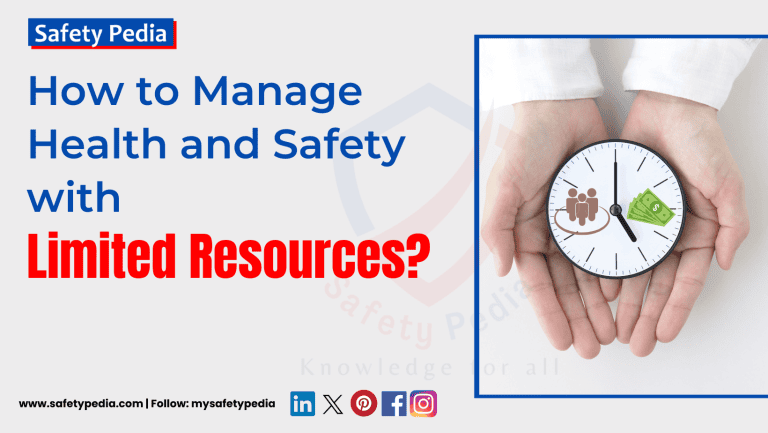

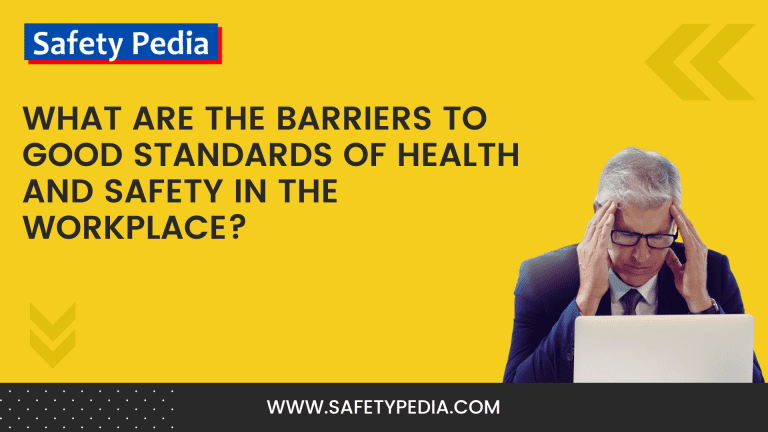
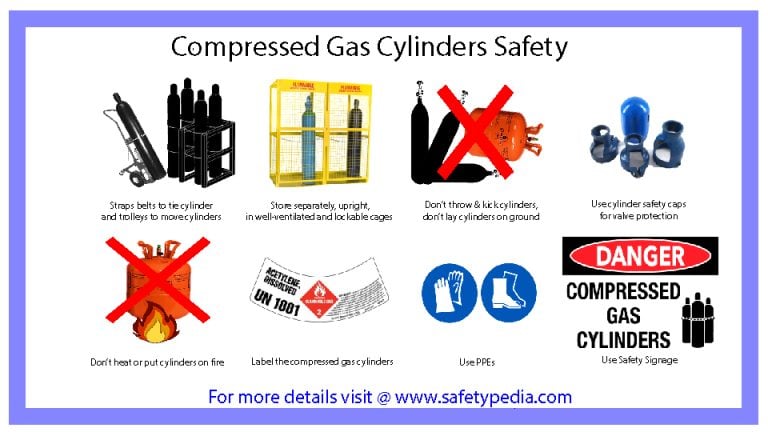
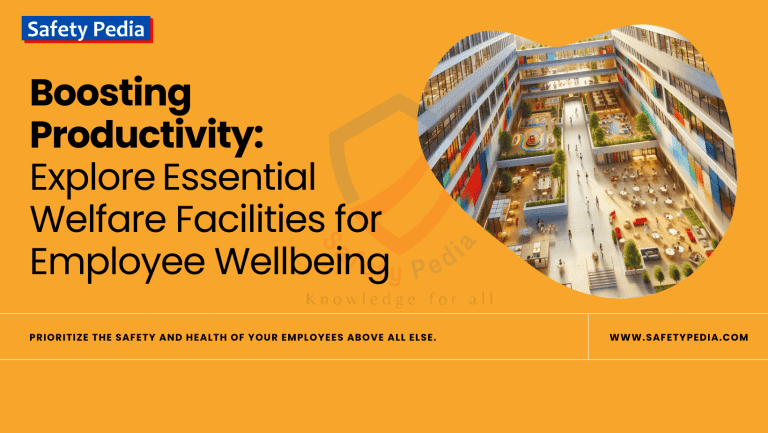
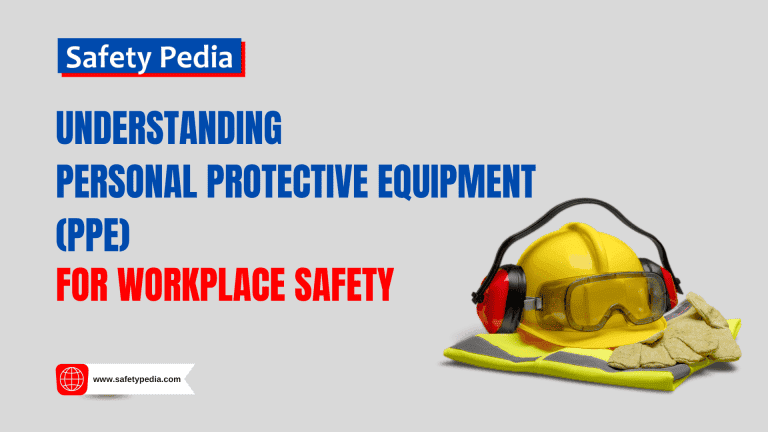
Your uplifting words and constructive input are deeply valued—thank you!